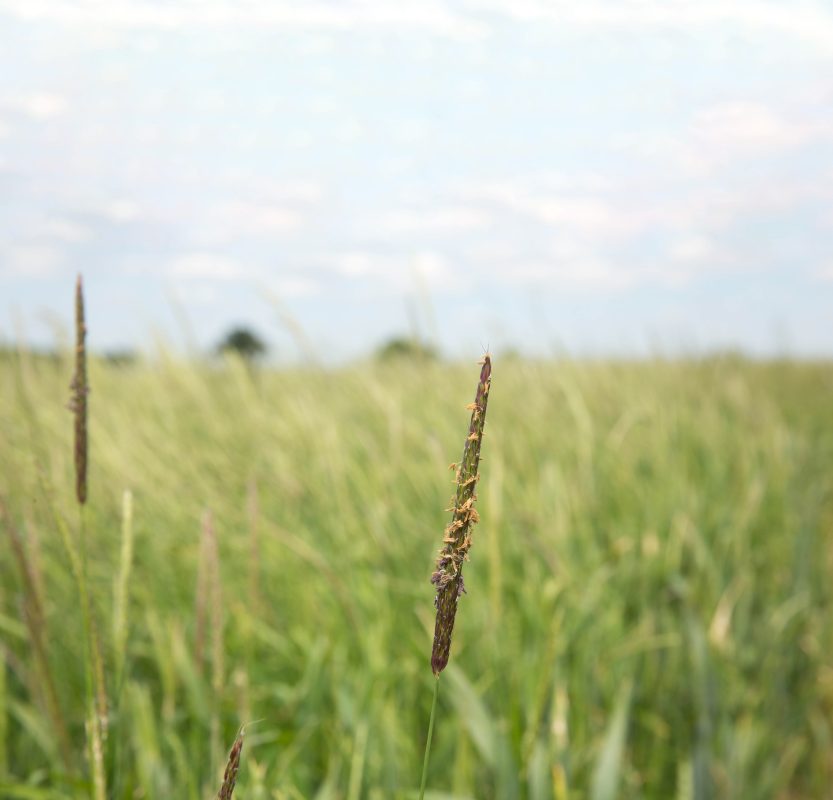Despite being a stalwart in the weed control toolbox, chlorotoluron has arguably found itself relegated to the shadows following a series of big herbicide launches. CPM takes a look at the value it can offer current day programmes.
“While it’s now used at a lower loading, it’s still a valuable product to have in the weed control toolbox.” HOLLY PRATT
By Janine Adamson and Rob Jones
With a range of new, highly effective residual herbicide actives being launched during the past few years, it’s understandable why focus may have wandered from chlorotoluron (CTU).
And while it’s unlikely to ever compete on like-for-like performance, what it does do, according to experts, is bolster overall control while offering added benefits such as aiding resistance management.
For context, CTU’s journey hasn’t been straightforward. Following withdrawal from EU registration in 2010, it was successfully re-registered in 2014 but at a lower dose rate, as part of a three-way co-form. Adama’s Holly Pratt believes this could be why it’s fallen out of favour.
“It was very efficacious at the higher rate, and while it’s now used at a lower loading, it’s still a valuable product to have in the weed control toolbox,” she says.
Available as two three-way products – Tower/Tribal (chlorotoluron+ pendimethalin+ diflufenican) and Chrome (chlorotoluron+ flufenacet+ diflufenican) – it’s intended use is to combat annual meadowgrass and a range of broadleaf weeds such as groundsel, chickweed and mayweed.
Weed expert, ADAS’ John Cussans, says it’s the flexibility of the product labels which adds most value. “You can use the products at the same rate across winter and spring crops, at both pre- and post-emergence timings.
“While other chemistry may remain in the shed not being used, growers are likely to always find an appropriate and timely opportunity to apply Tower or Chrome during the season.”
He agrees that even at the lower rate, CTU remains effective. “It’s a useful active in meadowgrass especially. Plus when combined with two other actives in a co-form – whether that’s pendimethalin/diflufenican or flufenacet/diflufenican – it’s targeting a wide spectrum of weeds, there’s a lot in there.”
A weed increasing in prevalence due to changes in tillage approaches is brome. Holly points out that by adding Tower into post-em tank mixes, this could reduce pressure across all brome species.
“Because it contains CTU, Tower adds persistency to a programme which is useful when a pre-em application may start to run out of steam. With brome having protracted emergence throughout the season, a level of product longevity is important in those situations,” she explains.
An example tank mix could be Tower plus prosulfocarb, adds Holly. “For the best results, it’s always wise to target the weed at early emergence, before it starts to tiller.”
According to John, the rise in popularity of no-till means that weed spectrums are changing overall, not just encouraging brome, but favouring species such as groundsel and poppy too. As such, glasshouse work conducted by ADAS has been looking at the performance of Tower against varying groundsel populations, compared with ALS-inhibiting chemistry such as metsulfuron, pyroxsulam and florasulam.
“Although further work is required to understand this fully, initial results indicate that Tower maintains control of groundsel, despite variation across the other actives screened,” says John.
ProCam agronomist for the North, Alistair Gordon, has used Tower for around eight years to primarily target annual meadowgrass. He says compared with straight flufenacet, the added broadleaf weed activity is what makes the product a solid all-rounder, thus proving popular in his region.
“In Scotland, with rotations shifting to include more cover crops and fallow areas, we’re also finding an increase in groundsel, which seeds quickly in the spring. This proves a significant problem in subsequent cereal crops.
“And because no pre-em herbicide gives full broadleaf weed control, and SU (sulfonylurea) chemistry is beginning to indicate resistance issues, we require alternative modes of action, as in products like Tower. We simply can’t rely on SUs alone to eradicate broadleaf weeds,” he stresses.
As for pernicious grassweeds like blackgrass and ryegrass, Holly says CTU is an effective partner product for hard-hitting chemistry such as cinmethylin and aclonifen. “It bolsters those actives and powers them up. In being a different mode of action, CTU is also helping to safeguard the newer chemistry in terms of resistance management.”
John agrees: “Supporting other herbicides and reducing the pressure on them is a critical part of product stewardship.
“If you take the whole weed control window and the opportunities presented for control, you can certainly introduce Tower or Chrome and see a potential benefit, particularly during difficult conditions such as cooler temperatures.” To conclude, Alistair reveals that where he’s advised the use of Tower on-farm, he’s observed a positive outcome from it being a three-way co-form. “When the three actives are presented in one formulation, it appears to deliver synergistic results in meadowgrass, compared what would be the sum of the solo actives. It’s efficiency in a can.”
This article was taken from the latest issue of CPM. Read the article in full here.
For more articles like this, subscribe here.
Sign up for Crop Production Magazine’s FREE e-newsletter here.




